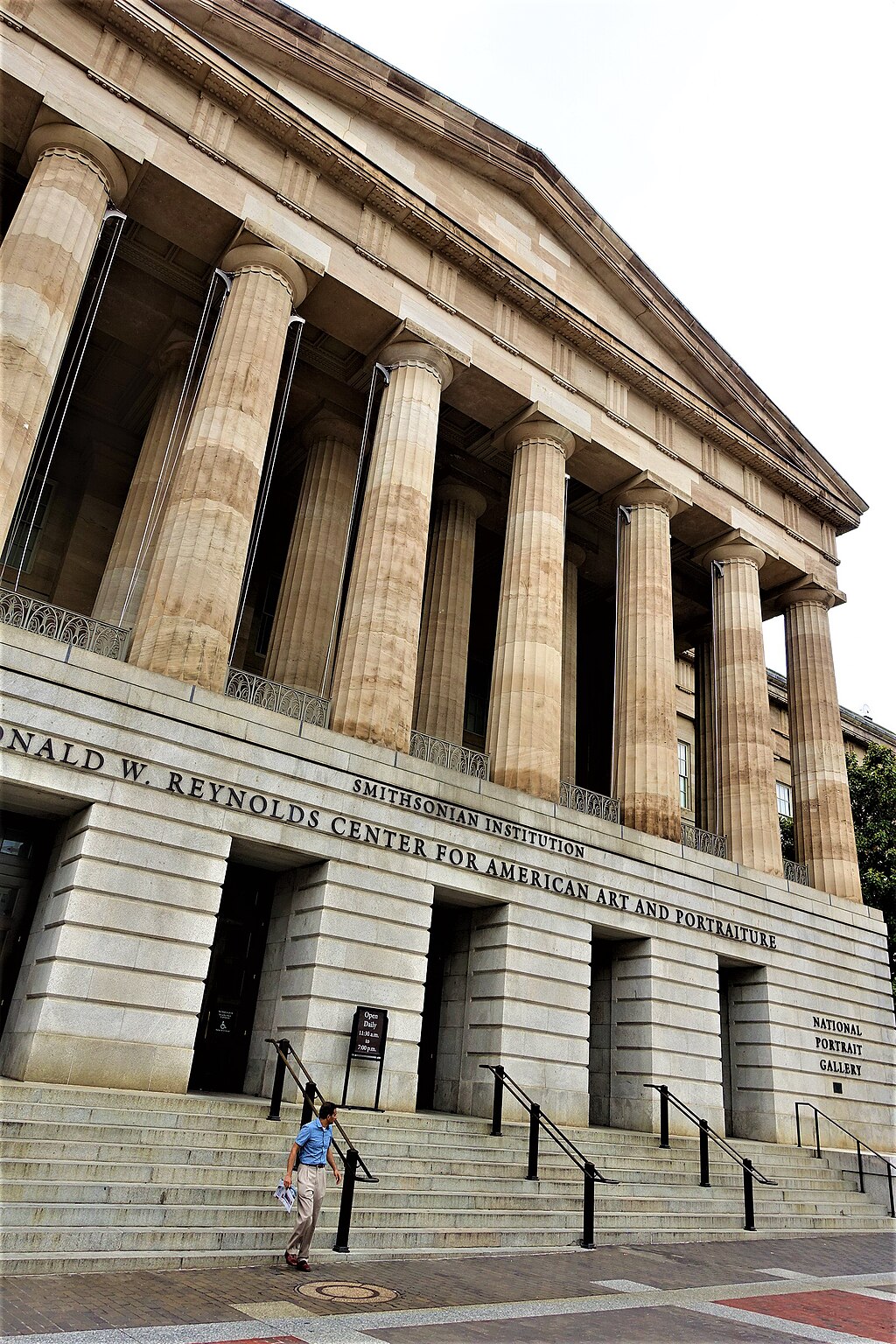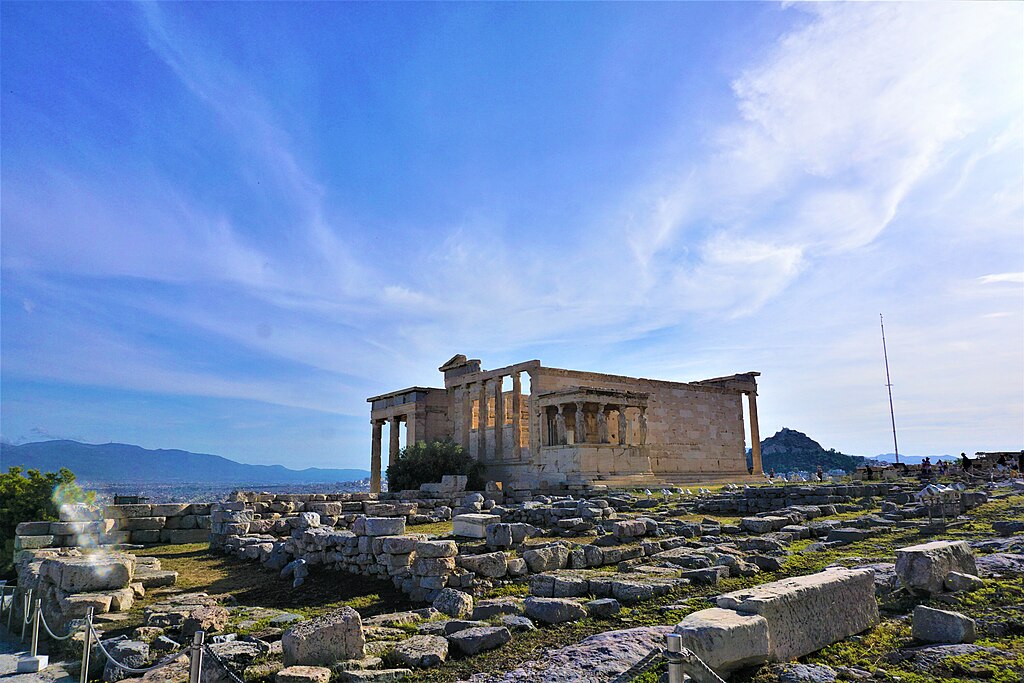
The Smithsonian American Art Museum is part of the Smithsonian Institution. It holds one of the largest collections of art, from the American colonial period to the present.
The museum has more than 7,000 artists represented in the collection. The museum’s main building is the old Patent Office Building, which it shares with the National Portrait Gallery. Craft-focused exhibitions are shown in the Renwick Gallery.
Virtual Tour of the Smithsonian American Art Museum
- “Skating in Central Park” by Agnes Tait
- “Buffalo Hunt on the Southwestern Prairies” by John Mix Stanley
- “Surrender of a Confederate Soldier” by Julian Scott
- “Westward the Course of Empire Takes Its Way” by Emanuel Leutze
- “The Headless Horseman Pursuing Ichabod Crane” by John Quidor
- “The Figurine” by William McGregor Paxton
- “Aurora Borealis” by Frederic Edwin Church
- “Alaskan Coastal Range” by Albert Bierstad
Highlights Tour of the Smithsonian American Art Museum
“Skating in Central Park” by Agnes Tait
“Skating in Central Park” by Agnes Tait is a large, festive scene of winter revelers in Central Park, New York City. It depicts skaters and sledders on the frozen lake and the snowy slopes of the park.
It is late afternoon, the sun is setting behind the Manhattan skyline, and the contrast between the snow and the dark branches of the bare trees is delightful.
“Buffalo Hunt on the Southwestern Prairies” by John Mix Stanley
“Buffalo Hunt on the Southwestern Prairies” by John Mix Stanley depicts the American West and the Native American life in a highly naturalistic depiction.
Stanley was an artist-explorer, a painter of landscapes, and Native American portraits and tribal life.
Unfortunately, over 200 of Stanley’s paintings, which were being held at the Smithsonian, were lost in an 1865 fire.
This significant loss of most of his works makes this portrayal of the American West highly valued.
“Surrender of a Confederate Soldier” by Julian Scott
“Surrender of a Confederate Soldier” by Julian Scott depicts a wounded soldier of the Confederate States Army in the American Civil War waving a flag of surrender.
The soldier is accompanied by a black man, presumed to be the soldier’s slave, and a woman holding an infant assumed to be his wife and child.
The painting does not glorify war, and instead, it shows the suffering and human sacrifice associated with war.
“Westward the Course of Empire Takes Its Way” by Emanuel Leutze
“Westward the Course of Empire Takes Its Way” by Emanuel Leutze is a painted study of a massive painted mural currently displayed behind the western staircase of the House of Representatives chamber in the United States Capitol Building.
The picture depicts a group of pioneers on their journey westward as they catch their first glimpse of the “promised land” of California.
“The Headless Horseman Pursuing Ichabod Crane” by John Quidor
“The Headless Horseman Pursuing Ichabod Crane” by John Quidor depicts a scene from Washington Irving’s 1820 short story “The Legend of Sleepy Hollow.”
The schoolmaster Ichabod Crane is fleeing on a white horse, pursued by the Headless Horseman on a black horse. The Headless Horseman is holding a pumpkin, which he is preparing to throw at Crane.
Visible in the background is the Old Dutch Church of Sleepy Hollow and the adjacent Cemetery, and the full moon.
The painting is one of several by John Quidor based on scenes from Irving’s written works about Dutch New York.
“The Figurine” by William McGregor Paxton
“The Figurine” by William McGregor Paxton depicts a maid carefully cleaning the glass encasing a Chinese porcelain figurine. Next to the glass case is a blue-and-white porcelain pot with gold trim.
The black background wall is in contrast to the two gold-trimmed chairs with pink upholstery and the indication of a picture frame and a fireplace stand at the extreme right.
Paxton’s name is prominently featured in the top left corner. Paxton’s compositions often portray women in beautiful interiors.
The painting was created in Boston, and the objects echo the region’s history of trade with Asia. It also captures the popularity of Asian decorative wares in America in the early twentieth century.
Paxton was an admirer of Johannes Vermeer’s work and similarly gravitated to indoor scenes, typically featuring women engaged in household duties, recalling Dutch painters’ domestic subjects.
“Aurora Borealis” by Frederic Edwin Church
“Aurora Borealis” by Frederic Edwin Church depicts the Aurora Borealis and the Arctic expedition of Isaac Israel Hayes. The painting includes personal and nationalist symbolism and references.
The painting’s mountain peak was named after Church during an important American Arctic expedition represented by the dwarfed ship. The ship’s details were drawn from a sketch Hayes had brought back upon returning from the expedition.
Among the vastness of nature, the tiny ship named “United States” highlighted America’s achievements and American optimism to navigate its future global role.
The ship’s safe passage through the dark and harsh Arctic environment and American destiny is symbolized by a minute light shining out from one of the ship’s windows.
Church used small touches of pigment built together through thin applications to ensure that the viewer does not notice the different paint strokes. This work used tones of ochre, brown, gray going to blue or green, and green.
“Alaskan Coastal Range” by Albert Bierstad
“Alaskan Coastal Range” by Albert Bierstad is an oil-on-paper sketch that he made for further detailing as later work. It was painted after traveling through British Columbia.
Bierstadt traveled through western Canada in 1889 on the Canadian Railway. He then took a steamship to Alaska, searching for more rugged landscapes, and was shipwrecked in Loring, Alaska.
He lived with the other passengers in Native American huts. While sheltering in the Native American settlement, he drew the sea’s shores and his Alaskan surroundings.
The colors and thin layers of paint evoke the wilderness in which Bierstadt was stranded. He filled two books with drawings and paintings of his surroundings.
Smithsonian American Art Museum
- Name: The Smithsonian American Art Museum
- Formerly: The National Museum of American Art
- City: Washington, D.C.
- Country: United States
- Opened: 1829
- Type: Art museum, Design & Textile Museum, Heritage Museum
- Location: 8th & F Streets NW, Washington, D.C., United States
Smithsonian American Art Museum Map
Smithsonian American Art Museum – 360 Views
Smithsonian American Art Museum – 360 Views
A Tour of Washington, D.C. Museums
- National Gallery of Art
- National Museum of American History
- National Air and Space Museum
- National Museum of African American History and Culture
- National Museum of Natural History
- National Portrait Gallery
- Smithsonian American Art Museum
- The Phillips Collection
- Hirshhorn Museum and Sculpture Garden
- International Spy Museum
- National Museum of Women in the Arts
- United States Holocaust Memorial Museum
Smithsonian American Art Museum
Smithsonian American Art Museum
~~~
“Character is like a tree and reputation like a shadow.
The shadow is what we think of it;
the tree is the real thing.”
– Abraham Lincoln
~~~
Photo Credit: JOM
Popular this Week








 Sponsor your Favorite Page
Sponsor your Favorite Page SEARCH Search for: Search Follow UsJoin – The JOM Membership Program
Sponsor a Masterpiece with YOUR NAME CHOICE for $5
Share this:
- Tweet
